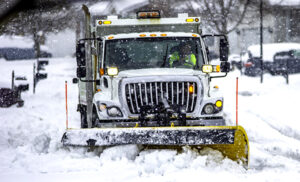Each winter, we receive tons of phone calls and emails related to jump starting heavy-duty vehicles. While some of the best practices for servicing these vehicles are common to light vehicle starting, heavy-duty vehicle starting does offer some unique challenges that are worth noting. So, we thought we would revisit this topic and provide a list of things to remember when it comes to jump starting heavy-duty vehicles.

2. Similarly to having the right jump starting equipment for your specific application, it is important to properly maintain that equipment. Regularly charging your jump starter(s) and keeping them at or near full charge as much as possible will enable you to get the maximum service life possible. This is especially true during periods of extreme cold, when jump starter power is most challenged. Allowing your equipment to reach low state of charge during extreme cold snaps can be very detrimental to its health and longevity.

4. The second tip for multiple battery starting is to always connect your jump starter to the battery closest to the starter. You want the jump starter’s power to get to the starter, but very low or totally dead batteries along the starting path can sap the jump starter’s power in the same way that poor connections or significant corrosion of the connections can.

6. On larger vehicles, such as OTR trucks, first take a few minutes to light the glow plugs. Properly connect the jump starter, put the vehicle’s key in the accessory position and light the glow plugs, which should take 20-40 seconds. Then, turn the vehicle’s key to the off position and allow the jump starter to recover for 2-3 minutes. Then, attempt to jump start the vehicle. This process will greatly increase your odds of success.
When it comes to deciding what jump starter is right for your operation, there are many factors that should be considered. These include the types and sizes of the vehicles you expect to need to start, the number of jump starts your operation encounters in a given day or week, the number of batteries in the typical vehicle to be started and the temperature range you experience in your specific climate. Each company’s needs are different and, as noted in Tip No. 1 above, it is important to choose the right tool for your needs.
For larger fleets, agricultural operations, large construction contractors, implement yards and intermodal facilities, it makes sense to move up to larger jump starting equipment specifically designed for the most demanding jump starting tasks. After speaking to our Technical Service team, many of these operations determine that a large, roll-around jump starter like our SOLAR HT1224AGM is what is required for their needs. When it comes to heavy-duty starting, this unit is the “Big Boy” of wheeled jump starters and is specifically designed for the applications listed above. It delivers the instant raw power of 1400 CCA in 12 Volt mode and 800 CCA in 24 Volt mode. Also, it utilizes non-spillable AGM batteries, so if it is tipped, the internal batteries will not be damaged. If you have extreme starting needs, the HT1224AGM is a unit that could make a lot of sense for you.







6 Responses
I bought a Clore Jump Stater for personal use a few years ago (and registered it) and have used it a few times with great success, but what I enjoy are the periodic reminders to charge it and newsletters I receive. Keep up the great work and thanks for a great product!
Bill – Thanks for your comment. We are glad your jump starter is serving you well. We are also really happy that the recharge reminders are helpful to you. Thanks, Jim from Clore Automotive
Looking at our shop unit as I type. It works great!!!
Thanks for the interesting articles and tech tips
Sincerely
Martin J. Moffit
Maintenance
Sagamore Hill National Historic Site
Oyster Bay New York
National Park Service
Martin – Thanks for your comment. We really appreciate it. We’re glad your shop unit is getting it done for you. That’s great to hear. Thanks again, Jim from Clore Automotive
Thanks for helping me understand that there are many factors that will be considered when it comes to choosing the right jump starter for your operations. Seems like there are a lot of options when it comes to construction equipment starters as well, so you have to probably ask to manufacturers look for professionals to guide you. In my opinion, it’s important to use the right equipment or tool for your own safety because they will all be related to electric currents in order to make a vehicle work.
Mia – You are absolutely correct. It is important to match the equipment used to the specific vehicles in your fleet or that you work on. This will ensure that your operations is as effective and efficient as possible. Thanks, Jim from Clore Automotive